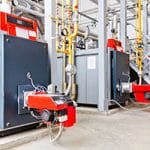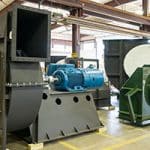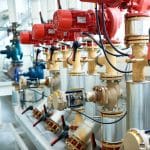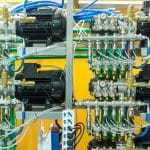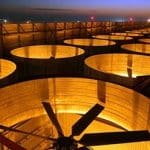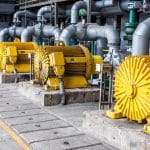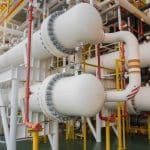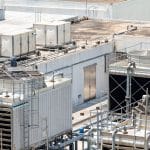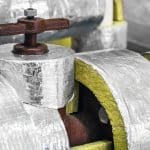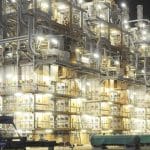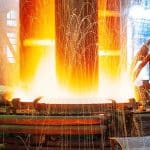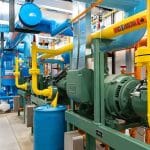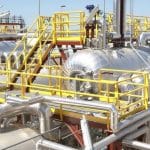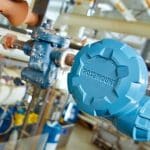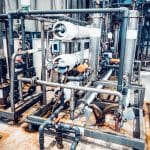The 3 kEys
- Adjust parameters like temperature, airflow, and drying time to match material requirements significantly reduce energy use.
- Real-time moisture monitoring ensures that materials are dried to the desired level without over-drying, preventing wasted energy consumption.
- High-efficiency motors and variable speed drives (VSDs) allow for precise control of motor speeds based on demand, reducing energy waste.
Industrial dryers play a critical role in many manufacturing processes, from food and pharmaceuticals to chemicals and textiles. Unfortunately, they’re energy hogs, making them a significant contributor to operating costs and environmental impact.
As businesses face growing pressure to optimize efficiency and reduce emissions, improving the energy performance of industrial dryers requires a comprehensive understanding of the drying process, dryer types, moisture control techniques, and energy-saving strategies.
In this guide, we delve into these aspects, exploring how to make industrial drying more efficient and sustainable.
Understanding the Drying Process
Drying is a deceptively complex operation, requiring a combination of heat, vapor removal, and agitation or surface renewal to achieve desired results. These three components are interdependent, and their effectiveness determines the overall efficiency of the drying process.
For an overview of the process and equipment used, consult extraktLAB’s “Industrial Drying: A Guide to the Process and Equipment”.
The variety of dryer designs and configurations available today is a testament to the challenges of industrial drying. Different materials and operational needs demand different solutions, emphasizing the importance of selecting the right dryer and optimizing its operation. With a clear understanding of the drying process’s fundamental elements, businesses can begin to address energy inefficiencies and waste.
Types of Industrial Dryers
Industrial dryers can be broadly divided into two main categories: batch and continuous systems. Each type serves unique purposes and offers specific advantages depending on the application.
Batch dryers are designed for discrete cycles, making them ideal for smaller-scale operations or processes requiring high precision. In batch drying, materials are loaded, processed, and unloaded in distinct phases. This approach provides excellent control over drying conditions but can be time-intensive and less suited to high-throughput applications.
Continuous dryers, by contrast, are built for large-scale operations where materials are fed into the system continuously. These systems are further classified based on their operational characteristics.
Nonadiabatic or contact dryers apply heat directly to the solid material, often through conduction or radiation, making them suitable for rapid drying with minimal energy waste.
Adiabatic dryers rely on hot air or gas to provide heat, and they can be configured for co-current (same direction airflow and material movement), countercurrent (opposite direction airflow and material movement), or fluidized bed designs.
Fluidized bed dryers, in particular, suspend materials in an upward airflow, creating uniform drying and efficient heat transfer. For further insights, refer to The American Society of Mechanical Engineers’ “Improving Drying Methods in Manufacturing”.
The diversity of dryer types underscores the importance of selecting the right system for specific applications. Understanding these classifications helps businesses tailor their drying operations to achieve optimal efficiency and energy performance.
Moisture Measurement and Control
Accurate moisture control is essential for both batch and continuous drying systems. In batch dryers, operators typically take samples at intervals to measure moisture content. These measurements guide adjustments to drying parameters, ensuring precision and avoiding over-drying, which wastes energy and compromises product quality. Once optimal drying conditions are established, moisture checks are required only near the end of the cycle.
In continuous systems, moisture measurement involves more dynamic techniques. Empirical runs help establish operating curves that define the relationship between feed and dryer characteristics. These curves allow operators to maintain consistent product dryness with occasional feedback and corrections from grab samples. Advanced technologies, such as infrared, microwave, or capacitance-based analyzers, provide real-time moisture monitoring. These tools enable automated, closed-loop control, reducing manual intervention and ensuring energy-efficient drying. To explore the importance of moisture control, take a look at MAC Instruments “Moisture Control in Drying Applications”.
Moisture measurement is more than a quality control measure—it is a cornerstone of energy optimization. By precisely controlling moisture levels, businesses can reduce unnecessary drying time and associated energy consumption.
Strategies to Reduce Energy Consumption
Improving the energy efficiency of industrial dryers requires a multifaceted approach. The first step is optimizing dryer operation. Adjusting parameters like temperature, airflow, and drying time to match material requirements can significantly reduce energy use. Real-time moisture monitoring ensures that materials are dried to the desired level without over-drying, preventing wasted energy and maintaining product quality.
Another critical strategy is upgrading to energy-efficient equipment. High-efficiency motors and variable speed drives (VSDs) allow for precise control of motor speeds based on demand, reducing energy waste.
Proper insulation in dryers and ductwork minimizes heat loss, further enhancing performance.
Heat recovery systems also play a vital role. These systems capture and reuse waste heat from exhaust streams, preheating incoming air or water and reducing the energy required for drying.
Reducing initial moisture content before drying is another effective way to save energy. Mechanical dewatering methods such as pressing, centrifugation, or vacuum systems can remove a significant portion of water, reducing the load on the dryer.
Improving airflow efficiency also contributes to energy savings. Streamlined duct designs, high-efficiency fans, and adjustable louvers optimize airflow, ensuring uniform drying and minimizing energy loss.
Regular maintenance is essential for sustaining efficiency. Routine inspections prevent inefficiencies caused by leaks, buildup, and worn components.
Advanced Technologies
For the DOE’s cutting-edge research on drying technologies, consult “Novel Energy-Efficient Drying Technologies”.
Modern drying technologies offer additional opportunities for efficiency. Infrared drying targets water molecules directly, reducing energy use.
Microwave drying heats materials from within, cutting drying time. Superheated steam drying replaces traditional air drying with a steam atmosphere, allowing for better heat recycling. These advanced methods can dramatically lower energy consumption, particularly for heat-sensitive or high-moisture materials.
Automation and monitoring systems further enhance energy performance. Programmable logic controllers (PLCs) and IoT sensors provide real-time adjustments and predictive maintenance, ensuring dryers operate at peak efficiency. For an in-depth review of control technologies, refer to “Control Engineering in Drying Technology” from HAL Open Science. It’s a 2009 paper, but many of it’s main points are still germane today.
The Big Finish
Industrial dryers are essential but energy-intensive. By understanding the drying process, selecting the right dryer type, and implementing precise moisture control, businesses can significantly reduce energy consumption.
These strategies not only lower operational costs but also align with broader sustainability goals, making industrial drying processes more environmentally and economically viable. By taking a comprehensive approach to energy management, businesses can unlock the full potential of their drying operations.




